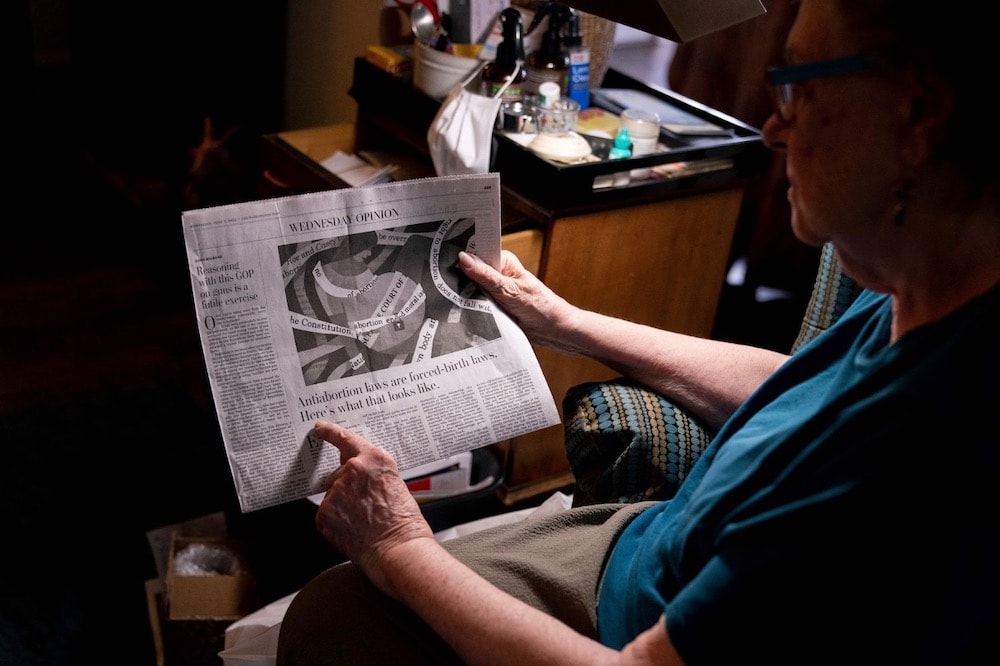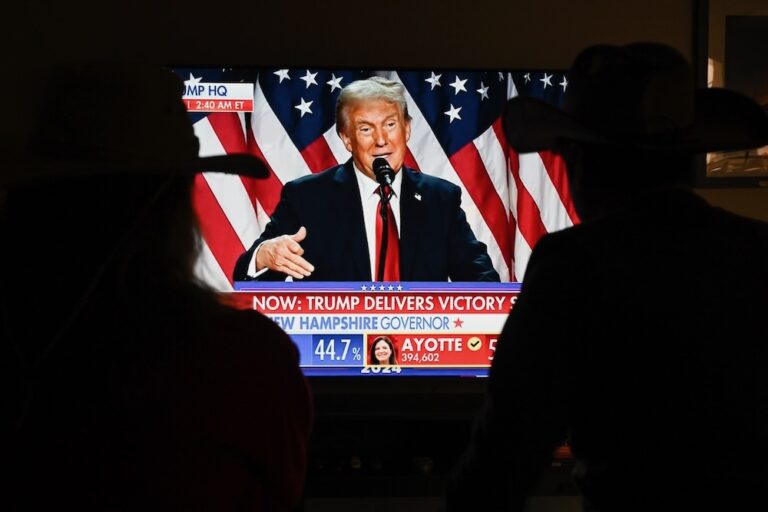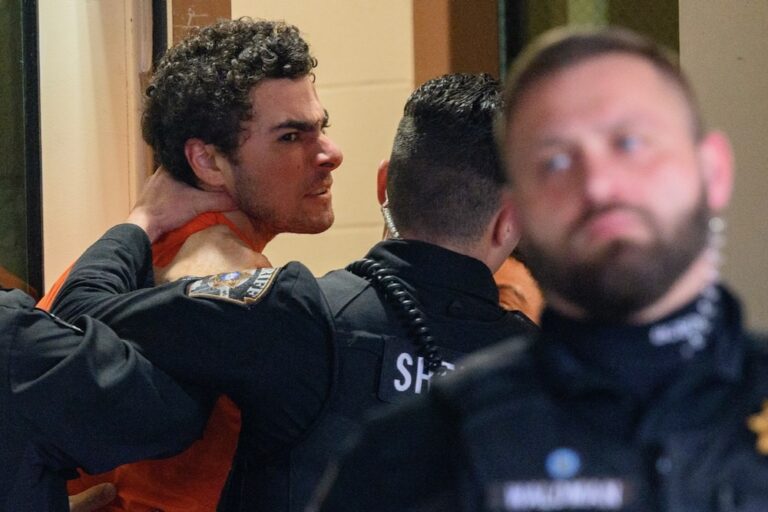Reporters covering abortion in the United States are wary of online harassment and the threat of physical violence after the U.S. Supreme Court overturned the constitutional right to abortion.
This statement was originally published on cpj.org on 1 September 2022.
By Katherine Jacobsen
In May, editors at the pro-abortion rights news website Rewire took the extraordinary step of removing reporters’ biographies from the web site.
The move was a safety precaution: After the leak of a draft of a majority Supreme Court opinion in Dobbs v. Jackson Women’s Health Organization to overturn the constitutional right to abortion, reporters at Rewire grew concerned about a possible uptick in online harassment.
“The newsroom has for years kept a repository of harassing messages to track patterns, just in case,” said editor-in-chief Galina Espinoza. The threats range from blowing up Rewire’s Virginia headquarters to suggesting the editors should be shot.
“I feel very fortunate to say that nothing has ever come of these kinds of threats,” Espinoza said. “But it’s obviously not only scary, it’s mentally taxing and it takes a toll on mental and emotional health.”
The changing abortion landscape in America has put some reporters who cover the topic on edge. In addition to concerns about online harassment, reporters told CPJ they are wary of real-world violence and of the ways that shifting laws could leave them and their sources vulnerable to legal threats in the wake of the Supreme Court’s decision in June to overturn Roe v. Wade.
In Kansas, where an anti-abortion activist killed abortion provider George Tiller in 2009, reporters are highly aware of the potential for violence around the issue.
“I would say that I’m always cautious of that danger, particularly being in a state where we’ve seen a doctor murdered in his church,” Sherman Smith, editor-in-chief of the nonprofit news organization Kansas Reflector, told CPJ. He said he’s not worried about an immediate threat, “but it’s something I think that we have to be cautious about, that when we’re going out to public events we have to think about it, and certainly when we’re talking to sources, we have to be cautious about putting them in harm’s way.”
Smith said that though the news organization has no stance on abortion, it was accused of taking sides after it published in July leaked audio of a meeting during which an activist group made clear its intent to ban abortion with a proposed amendment to nullify the state Supreme Court’s abortion protections. The group, Value Them Both, had publicly claimed that it didn’t seek to ban the procedure.
When the amendment failed, Value Them Both sent out an email blast claiming that “the mainstream media propelled the left’s false narrative, contributing to the confusion that misled Kansans about the amendment.” Smith said the newsroom also received vitriolic emails from readers, including one that accused the reporters of having “bloodshed” on their hands by failing to portray abortion as murder.
“From our perspective, we’re just trying to give people the information they need to make up their mind about this [issue], but if we’re not carrying water for them, [advocates] see us as the enemy and they can direct their rage toward us,” Smith told CPJ. The only other issue around which Smith remembers witnessing so much vitriol toward the media was another dealing with bodily autonomy: COVID-19 vaccine mandates.
Becca Andrews, a reporter at Mother Jones magazine who covers abortion and is based in Nashville, has also noticed a more heated environment, she told CPJ in a phone interview.
When a source who works in abortion rights called to say that anti-abortion activists had damaged her house and car, Andrews, who has a book about abortion rights coming out this fall, began reassessing her own risk profile.
“Things just feel a little more charged than they have previously,” said Andrews, adding that her identity as a white staff reporter adds a layer of privilege that others do not necessarily enjoy. “I’d like to say it all [the threats to advocates and sources] doesn’t have a chilling effect… but it’s messy.”
Shifting legal landscape
The Supreme Court decision to overturn the constitutional right to abortion has also ushered in a new era of legal uncertainty for pro-abortion activists, medical providers, and patients, as well as the journalists who cover them.
Journalist Rosemary Westwood, one of the few reporters in the Deep South on the reproductive health beat, chronicled the closing of Mississippi’s last abortion clinic at the center of Dobbs v. Jackson Women’s Health Organization case in a podcast called Banned.
She told CPJ in a phone interview that she began to fear that her reporting could be used against her sources after Roe v. Wade fell.
“I was reporting on things that were completely legal – they were just controversial. And now I’m reporting on stuff that’s going to be illegal, which is a completely different landscape,” Westwood said.
According to Gabe Rottman, director of the Technology and Press Freedom Project at the Reporters Committee for Freedom of the Press, a non-profit that provides free legal resources for journalists, Westwood is right to be concerned.
“People need to know what the fallout of the Dobbs decision looks like on the ground, which creates a professional obligation for journalists to tell the story,” he told CPJ in a phone interview. He fears that legislation in states where abortion is newly restricted could compel reporters to compromise their sources.
He pointed to Branzburg v. Hayes, a 1970s case in which prosecutors forced a reporter to hand over source information, arguing that the source, a drug dealer, was committing a crime. A court could, in theory, attempt to use this same argument to compel reporters to turn over identifying source material from their abortion coverage.
“There are, of course, First Amendment arguments you could make if that kind of situation arose [around abortion],” Rottman said. “But the fact that this is even in the realm of possibilities is itself cause for concern… [T]he temptation to push the envelope can itself impact newsgathering and reporters’ ability to report on abortion after Dobbs.”
For some news organizations, the possibility of legislation that increasingly could limit speech around abortion has also stoked concerns.
The National Right to Life Committee (NRLC), an anti-abortion activist group, drafted proposed state-level legislation that would make it illegal to host or maintain a website “that encourages or facilitates efforts to obtain an illegal abortion,” though the phrasing leaves it unclear if journalists covering the procedure and where it is offered could be implicated.
In South Carolina, lawmakers introduced legislation that echoes that proposed by the NRLC, and which would make it illegal to host a website or “[provide] an internet service” with information that could direct people to an abortion. The bill drew national attention when it was introduced in June, but South Carolina’s Republican governor, Henry McMaster, said in August that the restriction on speech about abortion was unconstitutional and is “not going to see the light of day.”
Though the First Amendment should, in theory, protect reporters, “[j]ust because something like this seems like it shouldn’t hold up in court doesn’t mean that it won’t,” said Ashton Lattimore, the editor-in-chief of the independent non-profit news outlet Prism, which focuses on justice reporting and has supported abortion access.
“There are plenty of times in the past when a newsroom has been sued into non-existence by a bad faith actor who got ahold of some law or piece of reporting,” Lattimore said. “Lawsuits are a handy way to distract us from doing work and tie up the financial resources that we would need to stay afloat. That’s one of our biggest concerns.”
As legal debates around abortion access continue, journalists covering protests both in favor of and against restrictions have also faced threats. The U.S. Press Freedom Tracker, which CPJ co-founded, has documented at least 14 incidents since the Dobbs decision was leaked in which journalists were detained or assaulted covering abortion-related protests.
Based on staff feedback, Rewire decided to shrink the size of its press badges, a trend that CPJ has documented in other U.S. newsrooms due to the increased targeting of journalists by law enforcement and demonstrators at protests.
U.S. journalists are not alone in the need for precautions when covering abortion and the issue’s attendant protests. In Poland, journalists were harassed, and some arrested, covering women’s marches held in protest of the country’s abortion ban in 2020. And in Brazil in 2019, a feminist outlet, AzMina, faced retaliation after publishing information about abortion access.
While it remains to be seen just how severely the new abortion landscape will impact the right to report in the U.S., journalists and newsrooms are paying attention more keenly than ever.
“My experience in the South is that the bulk of the anti-abortion movement, the religious and political groups, have so much power that threatening my physical safety has been nowhere on their list of ways to get what they want. They have so many other tools and avenues to advance their cause,” said Westwood. “I think it’s still too early to know where all of that energy and focus and anger that’s been directed at abortion is going to go.”
Katherine Jacobsen is CPJ’s U.S. and Canada program coordinator. Before joining CPJ as a news editor in 2017, Jacobsen worked for The Associated Press in Moscow and as a freelancer in Ukraine, where her writing appeared in outlets including Businessweek, U.S. News and World Report, Foreign Policy, and Al-Jazeera.



